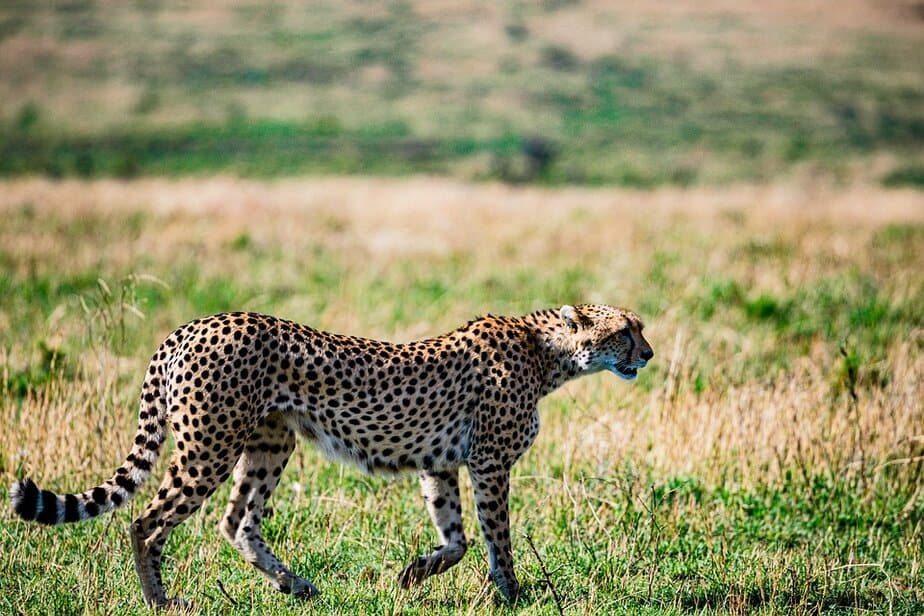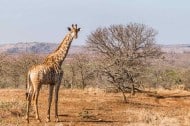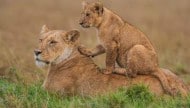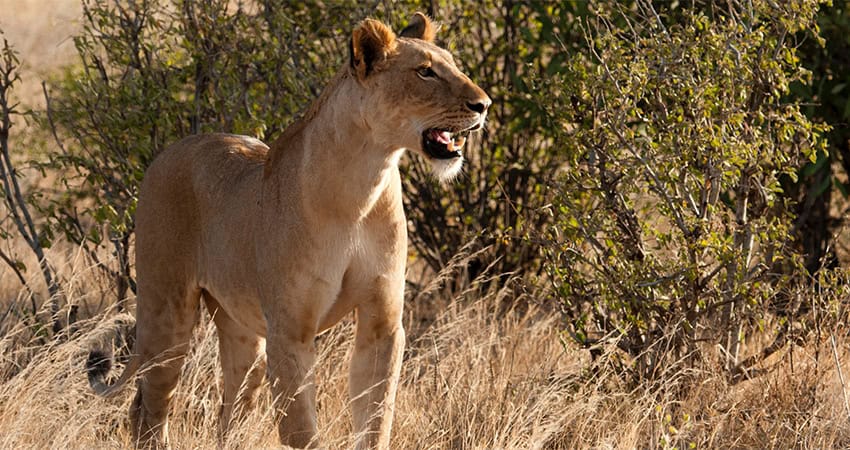
Safari in Kenya: What to Expect
Safari in Kenya: What Can I Expect? Your Ultimate Guide
Introduction: A safari in Kenya is more than just a trip; it’s a journey into the heart of Africa. From the moment you set foot on Kenyan soil, the air is filled with excitement, anticipation, and the promise of unforgettable encounters with nature. Whether you’re a seasoned adventurer or a first-time visitor, Kenya’s diverse landscapes, wildlife, and vibrant cultures will captivate your senses. But what can you actually expect from a safari in Kenya? This guide will walk you through everything you need to know, from the iconic Big Five to the best time to visit and the best accommodations to book. By the end of this blog, you’ll be ready to embark on the adventure of a lifetime.
1. The Wildlife: What Will You See on a Safari in Kenya?
One of the main draws of a safari in Kenya is, of course, the wildlife. Kenya is home to some of the world’s most iconic animals, and you’ll have the chance to see them up close in their natural habitats.
The Big Five: A Must-See on Your Safari
Kenya is renowned for offering the opportunity to spot the Big Five – the lion, leopard, elephant, buffalo, and rhinoceros. These majestic animals are the most sought-after sightings for safari-goers and are a symbol of African wildlife conservation.
- Lions: Often referred to as the “King of the Jungle,” lions are found in large numbers in Kenya, particularly in the Masai Mara. These magnificent predators can often be seen lounging in the shade, hunting, or interacting with their pride.
- Leopards: Leopards are elusive and can be hard to spot, but your safari guide will use their keen knowledge to help you track these stunning cats, often lounging in trees after a successful hunt.
- Elephants: Kenya is home to some of the largest elephant herds in the world, especially in Amboseli National Park. You’ll have the chance to watch these gentle giants as they roam freely across the plains.
- Buffalo: The African buffalo is a sturdy, formidable animal and can be found in large herds across Kenya’s national parks. They are known for their unpredictable nature, making sightings particularly thrilling.
- Rhinoceros: Kenya’s rhino population, both black and white, is well-protected, particularly in places like the Ol Pejeta Conservancy and Nairobi National Park, where you might have the rare privilege of seeing one in the wild.
Beyond the Big Five: Other Wildlife to Expect
Kenya’s wildlife diversity doesn’t end with the Big Five. During your safari, you can also expect to see a wide array of other animals, such as:
- Giraffes: The reticulated giraffe is native to Kenya and is often seen grazing in the savannahs of the Masai Mara and Samburu.
- Zebras: The black-and-white striped zebras are a common sight in almost every park. In fact, they are often seen migrating in large herds during the Great Migration.
- Cheetahs: Known for their incredible speed, cheetahs are often seen hunting or resting in the open plains of the Masai Mara.
- Crocodiles and Hippos: Found in Kenya’s many rivers, these fascinating creatures are often seen basking in the sun or swimming in the water.
- Birdlife: Kenya is a birdwatcher’s paradise, with over 1,100 species of birds. Look out for flamingos, ostriches, eagles, and more.
2. Safari Destinations in Kenya: Where Will Your Adventure Take You?
Kenya is home to some of the world’s most famous safari destinations, each offering unique landscapes, wildlife, and experiences.
Masai Mara National Reserve: The Jewel of Kenya
Perhaps the most iconic safari destination in Kenya, the Masai Mara is world-renowned for its wildlife and dramatic landscapes. The Mara is famous for the Great Migration, which occurs annually from July to October when over 1.5 million wildebeest, zebras, and gazelles cross the Mara River in search of fresh grazing grounds. Watching this spectacle is one of the most awe-inspiring experiences you can have on a safari.
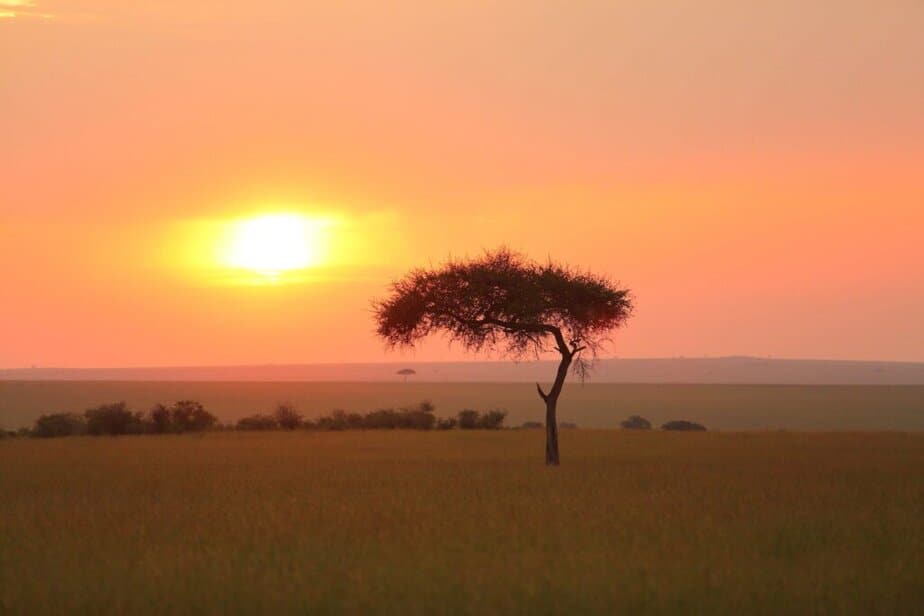
The Masai Mara is also an excellent place to see the Big Five, along with cheetahs, hyenas, and hundreds of bird species. The vast savannahs, rolling hills, and acacia trees create a picture-perfect setting for a safari adventure.
Amboseli National Park: A View of Mount Kilimanjaro
Amboseli is another top safari destination in Kenya. Known for its stunning views of Mount Kilimanjaro, the highest peak in Africa, Amboseli is famous for its large elephant herds. The park’s wetlands and marshes offer the perfect environment for elephants to thrive, making it one of the best places in Kenya to see these majestic creatures up close.
Amboseli’s landscape is a mix of open plains, swamps, and dry, dusty plains. In addition to elephants, you’ll find giraffes, zebras, lions, and wildebeests. The park is also home to a number of bird species, including flamingos and African fish eagles.
Tsavo National Park: Kenya’s Wild Frontier
As one of the largest national parks in the world, Tsavo is a must-visit for those seeking an authentic, remote safari experience. Divided into Tsavo East and Tsavo West, the park is famous for its large populations of elephants, as well as its iconic red-dusted elephants, which appear to be painted with the distinctive red soil of the region.
The park’s landscapes range from volcanic hills and savannah to lush forests and rivers, offering an impressive array of habitats and wildlife. In addition to elephants, you can expect to see lions, leopards, giraffes, and various antelope species.
Samburu National Reserve: A Hidden Gem
Situated in the northern part of Kenya, Samburu is a lesser-known safari destination that offers a unique experience. The reserve is home to the Samburu Special Five – animals that are rare to this region, including the reticulated giraffe, Grevy’s zebra, Somali ostrich, Beisa oryx, and the gerenuk, a long-necked gazelle.
The landscape in Samburu is arid and rugged, with dry riverbeds, thorny bushes, and scattered trees. The region’s wildlife is adapted to the dry conditions, and game drives here are particularly rewarding.
3. Safari Activities: What to Expect
A safari in Kenya is about more than just watching wildlife from a vehicle. There are several other ways to engage with the environment and learn about Kenya’s natural and cultural heritage.
Game Drives: Your Gateway to Wildlife
The classic safari experience involves game drives, where you’ll travel in an open-top 4×4 vehicle, accompanied by a knowledgeable guide. Most safaris begin early in the morning to catch the animals when they’re most active, followed by a break for breakfast, and then another drive in the late afternoon, when the animals are again on the move. These drives allow you to experience the thrill of spotting wildlife in their natural environment, from predators hunting to herds of wildebeest migrating across the plains.
Walking Safaris: A Closer Look at the Wilderness
For a more intimate experience, consider a walking safari. Led by an armed guide, you’ll explore the bush on foot and learn about the ecosystem from a different perspective. This activity is perfect for those who want to connect with nature, track animal footprints, observe birds, and appreciate the smaller details of the environment, such as plants and insects.
Night Safaris: The Wild Comes Alive After Dark
In some parks, night safaris are available, allowing you to spot nocturnal animals such as leopards, hyenas, owls, and bush babies. These safaris typically occur after dark when the wildlife is more active, providing a thrilling opportunity to witness a different side of Kenya’s wildlife.
4. Cultural Experiences: Engaging with Local Communities
While the wildlife is undoubtedly the star of a Kenya safari, the country’s vibrant cultures offer an enriching complement to your adventure.
The Maasai People
The Maasai are one of the most famous tribes in Kenya, and their colorful culture is closely tied to the land and wildlife. During your safari, you may have the opportunity to visit a Maasai village, learn about their customs, and witness traditional dances and ceremonies. Many Maasai guides also share their deep knowledge of the land and its animals, offering a unique perspective on the wildlife you encounter.
Other Kenyan Tribes
Kenya is home to over 40 different tribes, each with its own unique customs, language, and traditions. From the Samburu in the north to the Kikuyu in the central highlands, you’ll have the opportunity to engage with diverse cultures throughout your journey.
5. When to Go on Safari in Kenya: Best Time to Visit
Kenya offers a safari experience year-round, but the best time to visit depends on what you want to experience.
Dry Season (June to October): Ideal for Wildlife Viewing
The dry season is considered the best time to visit Kenya, especially if you’re hoping to witness the Great Migration in the Masai Mara. The grass is shorter, making it easier to spot animals, and the weather is generally warm and sunny. This is also the time when you’re most likely to see the Big Five and experience a more concentrated wildlife experience.
Wet Season (November to May): Fewer Tourists, Lush Scenery
While the wet season brings occasional rain showers, it’s still a great time to visit for those seeking a quieter experience. The parks are less crowded, and the landscape is lush and green, offering beautiful photography opportunities. The rains also bring newborn animals, which adds to the charm of the season.
6. Safari Accommodation: Where to Stay on Safari in Kenya
Kenya offers a range of accommodation options, from luxury lodges to budget-friendly tented camps. Whether you prefer staying in opulent comfort or roughing it under the stars, there’s something for every type of traveler.
- Luxury Lodges and Camps: If you’re looking for comfort and exclusivity, Kenya’s luxury lodges, such as Angama Mara and Fairmont Mara Safari Club, offer world-class amenities, gourmet dining, and breathtaking views of the savannah.
- Mid-Range Options: For those seeking a more affordable option, there are mid-range tented camps and lodges offering comfortable accommodations, great food, and excellent service without breaking the bank.
- Budget Safari Camps: For budget-conscious travelers, many parks have budget-friendly campsites and basic lodges, providing an authentic safari experience at a lower cost.
Conclusion: An Unforgettable Experience Awaits
A safari in Kenya is a once-in-a-lifetime adventure that promises breathtaking landscapes, incredible wildlife sightings, and a rich cultural experience. Whether you’re an animal lover, an adventure seeker, or someone who simply wants to experience the beauty of Africa, Kenya’s safaris will leave you with memories that will last forever. So, pack your bags, plan your trip, and prepare for the safari of a lifetime!
